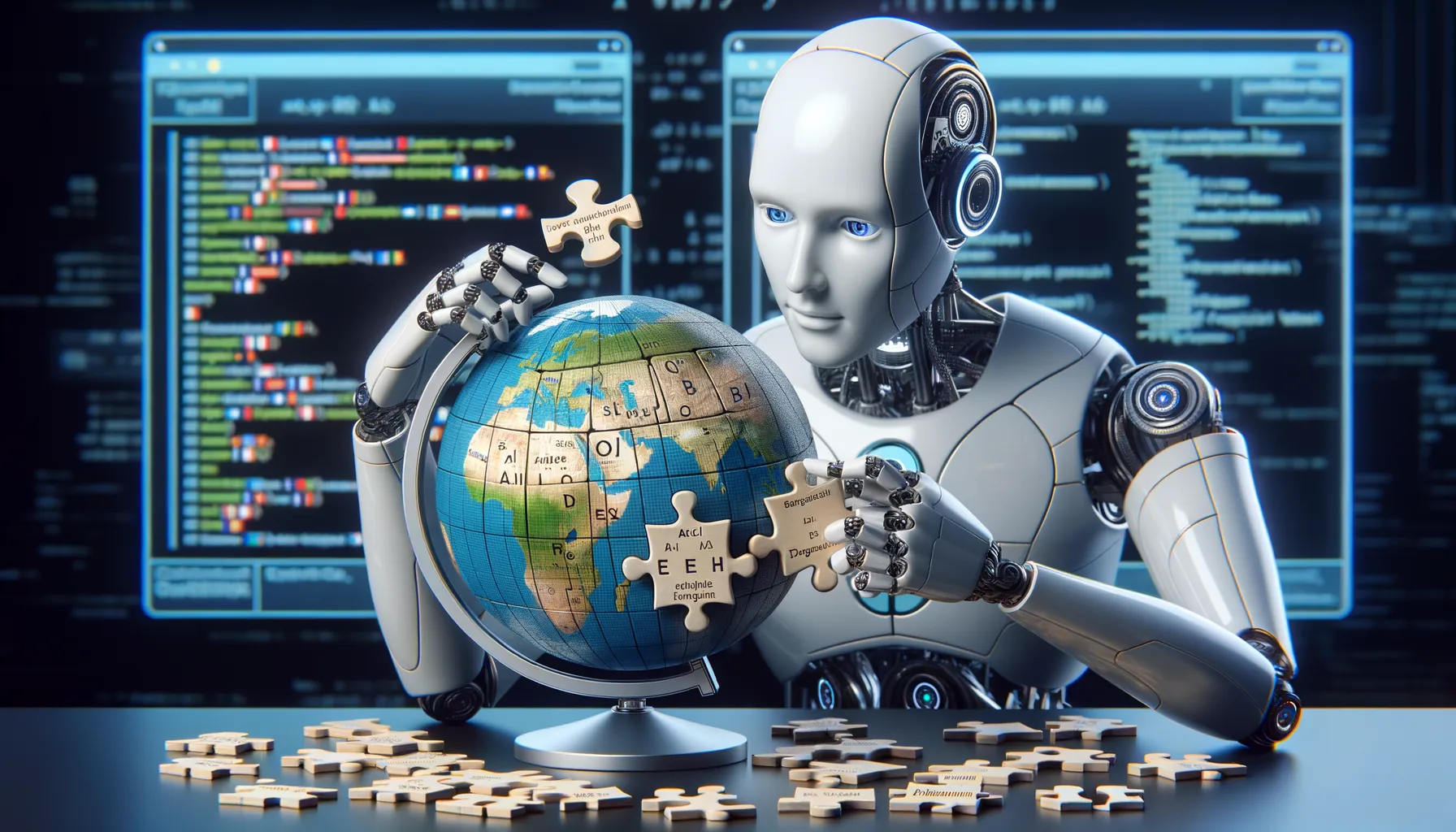Introduction to AI in Mobile App Localization
Imagine this: you’ve designed a beautifully crafted mobile app, packed with features, and ready to take the world by storm. But here’s the catch—your app was built in English, while your users speak dozens of other languages. That’s where the magic of AI-driven localization comes into play, transforming what was once an uphill battle into a streamlined, efficient process.
What Makes AI a Game-Changer in Localization?
Gone are the days of manual translations riddled with inaccuracies or tone-deaf cultural missteps. With cutting-edge Artificial Intelligence, localization isn’t just about swapping words; it’s about capturing the heartbeat of a community in their own language. AI takes care of nuances, idioms, and even cultural sensitivities without breaking a sweat.
Here’s how AI reimagines this space:
- Automated translation engines: Tools like neural machine translation create polished text that resonates with context.
- Real-time adaptability: AI systems can adjust phrasing on-the-go based on evolving language trends.
- Data-backed insights: Imagine having the power to predict user preferences—AI learns from interactions to improve accuracy over time.
A Symbiosis Between Tech and Culture
Localization is no longer just technical; it’s profoundly human. For example, an app targeting Brazil might shift its tone to a warm, conversational style that feels inherently Brazilian. This fusion of AI’s speed and precision with cultural intelligence is reshaping the mobile app landscape, one perfectly tailored translation at a time. If that doesn’t feel revolutionary, we don’t know what does!
Key Benefits of AI for Localization Processes

How AI Supercharges Your Localization Efforts
Imagine this: you’re sweating over perfecting your app for global markets, tailoring it to every language and culture. Sounds overwhelming, right? That’s where AI-powered localization swoops in like a superhero to save the day. The secret sauce lies in its ability to speed things up, cut costs, and make everything feel like it was designed by a local genius.
Here are some of the key benefits you’ll love:
- Lightning-fast translations: AI tools can process vast volumes of text in the blink of an eye, making manual translation efforts look archaic.
- Cultural adaptability: Say goodbye to awkward mistranslations—AI dives deep into cultural nuances, ensuring your app feels natural in every market.
- Consistency at scale: From button texts to entire user manuals, AI keeps your brand voice steady across all platforms, in every language.
A Personal Touch with Machine Precision
Ever thought about how tricky it is to strike that balance between sounding professional yet approachable? AI makes it easy. Tools like Natural Language Processing (NLP) enable your app to “speak” like a local while sticking to your core messaging. Picture a fitness app that encourages users in Spanish with just the right level of motivation—it’s not robotic; it’s relatable. That’s the magic of AI at work.
AI-driven Tools and Technologies in Localization

Transforming Code into Culture
Picture this: your mobile app is gaining traction globally, but users in Japan find the phrasing awkward, while those in Germany feel disconnected from the layout. This is where AI-driven tools swoop in like localization superheroes. These technologies don’t just translate words—they adapt meaning, tone, and even design nuances to fit local preferences.
Take Natural Language Processing (NLP) as an example. It doesn’t merely turn “hello” into “hola” or “bonjour.” With its linguistic wizardry, it deciphers cultural contexts, idiomatic expressions, and slang. Dive deeper, and you’ll discover Machine Translation (MT) models like Google’s Neural Machine Translation, turning multilingual chaos into clear, polished app content.
- AI-powered Content Optimization: Tools like Smartling analyze user behavior across regions, optimizing text placement and length to enhance readability.
- Automated Visual Adaptation: Ever noticed how text expands in German? AI tools dynamically adjust layouts, fonts, and even colors for seamless design harmony.
These technologies act as bridges, breaking linguistic barriers, ensuring your app speaks—not just to users’ minds—but their hearts. The result? Localization that feels less like a task and more like an art.
Challenges of Implementing AI for Localization

Technical Roadblocks That Keep You Up at Night
The promise of AI in localization feels like a dream come true—until you hit the brick wall of real-world challenges. First up, let’s talk about data. AI thrives on data, but here’s the catch: most apps don’t have neatly labeled, ready-to-train datasets lying around. You need mountains of multilingual content just to get started. And without it? Results feel less like localization and more like a bad game of broken telephone.
Secondly, let’s not ignore the elephant in the room: cultural nuance. Sure, AI can translate “Hello” into dozens of languages, but can it recognize when a joke lands—or worse, falls flat? For instance, a chatbot’s humor in English might totally bomb in Japanese. Not exactly the user experience you were aiming for, right?
- Integration headaches: Plugging AI tools into existing workflows can feel like wrestling a particularly stubborn octopus. Do you overhaul everything or bolt it onto what you’ve got?
- Cost vs. impact: Training and maintaining these models doesn’t come cheap. Smaller teams might wonder if they’re taking out a mortgage for a tool they’ll barely use.
The Human Factor in an AI-Driven World
Localization is deeply human—it’s built on emotions, history, and culture. AI, for all its genius, lacks that human touch. Ever seen those awkward translations that make headlines? Like when “Welcome” becomes something wildly inappropriate in another language? That’s what happens when humans aren’t in the loop.
Also, trust is huge. Imagine handing over your beloved app’s tone and voice to an algorithm. It’s like letting a stranger rearrange your furniture while blindfolded. Sure, it might work out… or your users might end up scratching their heads. Balancing machine efficiency with human oversight isn’t just smart—it’s essential.
Future Trends and Innovations in AI Localization

AI-Powered Personalization: The Game Changer
Picture this: your favorite app speaks to you, not just in your language but in your cultural dialect, adjusting its tone and nuances to feel like home. That’s where the future of AI in localization is headed—towards a world of hyper-personalized user experiences. With the rise of **Natural Language Processing (NLP)** and **neural machine translation**, apps won’t just translate; they’ll feel *alive.*
AI innovations are diving deep into understanding regional quirks, idioms, and even emojis. How? By analyzing millions of interactions and learning cultural subtleties faster than ever. Imagine an app giving a funny response in Kenya’s Swahili slang or offering a poetic phrase in Japanese—this level of charm is coming!
- Emotion detection will allow apps to adjust tones based on user sentiment.
- Dynamic linguistic updates mean translations won’t feel outdated or awkward anymore.
The Rise of AR and Multimodal Localization
Ever thought about augmented reality (AR) translating signs in real time or tailoring localized holographic ads on-the-go? With **AI-driven AR**, that’s no longer science fiction. Take visual-based AI, for instance—it’s set to integrate text, images, and gestures seamlessly. It’s like having a global tour guide in your pocket.
Multimodal learning is another trend to watch. Instead of relying solely on written inputs, AI will combine text, voice, and image recognition to craft more holistic translations. Need an example? Think of apps interpreting a voice note, recognizing a photo of a street sign, and delivering context-aware results instantly. With these advancements, localization will feel less like a tool and more like magic in action.
